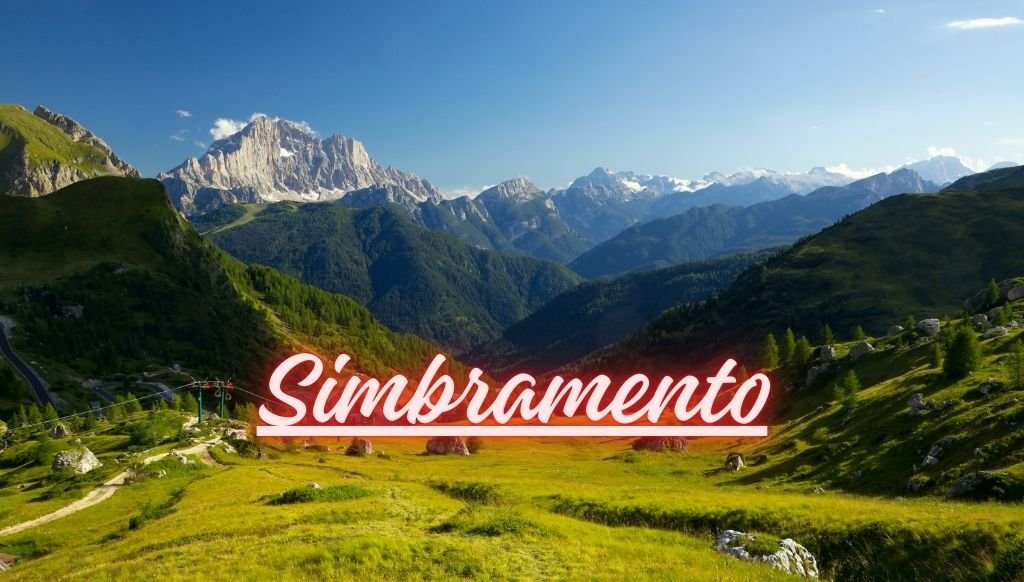Have you ever looked at tall mountains, deep valleys, or wide coastlines and wondered how they were shaped? The ground under our feet is always moving and changing, even if we do not notice it. Some of these changes happen slowly over thousands of years, while others take place suddenly and cause great damage. To describe these movements, scientists use many different terms. One of these is the Italian word “simbramento.”
Simbramento means material displacement. In simple words, it is when soil, rocks, snow, or other natural material moves from one place to another because of natural forces or human activities. This movement can be sudden, like a landslide, or very slow, like the ground sinking over many years. Understanding simbramento is important because it helps explain why landscapes change, why natural disasters occur, and how human projects like mining or construction must be planned carefully.
History and Origins of the Term
The word simbramento comes from the Italian language. It is connected to the verb “simbrare,” which means to shift or move something. The term first appeared in the late 1800s in Italian scientific writings. Italy is a country with many mountains, active volcanoes, and earthquakes, so it is not surprising that Italian geologists created a word to describe the constant shifting of land and rocks.
At first, simbramento was mostly used in mining studies. When miners removed underground materials, the surrounding rock and soil often shifted, sometimes causing dangerous collapses. Over time, scientists started using the word more broadly to talk about all kinds of ground movements, from landslides to snow avalanches. By the 20th century, geologists outside Italy had also started using the word. Today, simbramento is studied and discussed in many countries because it describes a process that affects people and industries everywhere.
Scientific Meaning of Simbramento
In science, simbramento means the displacement or movement of natural materials like rock, soil, sand, or snow. It can be fast or slow, small or very large. Unlike erosion, which slowly wears material away, or earthquakes, which describe sudden ground shaking, simbramento focuses on the mass movement of material from one place to another.
The main forces behind simbramento are gravity, water, temperature changes, and human activities. When the balance of these forces changes, the ground can no longer stay stable, and material starts to shift. For example, after heavy rain, the soil on a hillside becomes heavy and slippery, and gravity pulls it down. Or when mining creates a large empty space underground, the ground above slowly sinks into that space.
Simbramento is a flexible term because it can describe many different processes. It reminds us that the earth is always moving, sometimes in ways we do not expect.
Types of Simbramento
There are several different kinds of material displacement that fall under simbramento. Each has its own causes and effects.
- Landslides: These happen when rocks or soil suddenly slide down a slope. Landslides can be triggered by earthquakes, heavy rain, or human activities like road building. They can destroy homes, roads, and farmland in minutes.
- Subsidence: This is when the ground slowly sinks. It often happens when underground water, oil, or minerals are removed, leaving empty spaces. Over time, the land above collapses into those spaces. Cities built on such ground can face cracks in buildings and roads.
- Avalanches: On mountains covered with snow, avalanches are sudden movements of snow and ice rushing down the slope. They can be caused by temperature changes, new snowfall, or even a loud noise. Avalanches move quickly and are very dangerous for climbers and villages.
- Liquefaction: During earthquakes, soil that is full of water can lose its strength and behave like a liquid. Buildings standing on such soil may tilt, sink, or collapse.
- Coastal and riverbank displacement: Waves, tides, and river currents can move large amounts of sand and soil, reshaping coastlines and riverbanks.
All these types of simbramento show how powerful natural forces can be and why people must study them closely.
Causes and Contributing Factors
Simbramento can be caused by natural forces or human activities.
Natural causes include earthquakes, which shake the ground and loosen rocks; heavy rainfall, which makes soil slippery; and freezing and thawing cycles, which weaken rock and soil over time. Glaciers also play a role. When they melt, they leave behind unstable slopes that may collapse.
Human causes are just as important. Mining leaves behind empty spaces underground. When these spaces collapse, the ground above sinks. Construction activities like tunneling, drilling, or digging foundations disturb the natural balance of the soil. Removing forests also increases the risk, because trees and plants help hold soil together with their roots. Pumping too much groundwater out of the ground is another reason. When underground water is removed, the soil loses support and begins to sink.
Understanding these causes helps scientists and engineers predict where simbramento might happen and how to reduce its impact.
Real-World Case Studies
Simbramento can be seen in many parts of the world.
In the Italian Alps, glaciers have been melting because of climate change. As they retreat, rocks and soil once held together by ice start collapsing, creating landslides and rockfalls. These changes threaten local villages and roads.
In Chile, large mining operations have caused land subsidence. Whole neighborhoods have been damaged as the ground beneath them slowly sinks. The cost of repairing buildings and infrastructure is very high.
Naples, Italy, has faced serious challenges due to underground construction. The building of subway lines and tunnels has caused soil to shift, making the ground unstable. Engineers had to design special methods to prevent collapses.
Along the Adriatic coast, strong waves continuously move sand and soil. This coastal displacement affects fishing villages and tourist areas, forcing governments to spend money on protective barriers.
These examples show how simbramento can affect both natural and human environments in different ways.
Impact on Industries and Society
The effects of simbramento are not limited to nature. They also touch many industries and communities.
Mining companies must pay careful attention to ground stability. If the land above a mine collapses, it can cause accidents, destroy equipment, and put workers at risk. Construction companies also face challenges. If they do not study the soil carefully, buildings, bridges, or tunnels may fail.
Urban planners must consider simbramento when designing cities. In areas where the ground is unstable, stronger foundations and special building techniques are required. Agriculture is also affected because soil movement changes water flow and nutrient levels in farmland. Crops may grow poorly in displaced soil.
For ordinary people, simbramento can mean higher costs, risks to safety, and changes in land use. Governments and communities must work together with scientists to manage these risks.
How Simbramento Is Studied and Measured
Studying simbramento requires both fieldwork and technology. Geologists often visit sites to observe cracks, tilting, or other signs of movement. They collect soil and rock samples to test in laboratories.
Advanced tools are also used. Ground-penetrating radar shows what lies beneath the surface without digging. Seismic surveys study how vibrations move through the ground, which reveals changes in soil strength. Remote sensing from satellites provides wide views of areas that may be shifting. Drones are also used to capture detailed images of slopes and valleys.
Geotechnical sensors placed in tunnels, dams, or buildings give real-time warnings when the ground starts to move. These methods together provide a complete picture of simbramento, helping experts make accurate predictions.
Mitigation and Prevention Techniques
Preventing simbramento is not always possible, but its effects can be reduced.
Engineers often design drainage systems to stop water from soaking into soil, because water is a major cause of displacement. Retaining walls and steel anchors can be used to hold slopes in place. In some areas, nets and barriers are built to catch falling rocks.
Planting trees and restoring vegetation also helps, since plant roots make soil stronger. Regular monitoring is another key step. Sensors and surveys can detect early warning signs, giving people time to act.
Construction companies can choose smarter designs that match the local ground conditions. Workers and communities are also trained to recognize early signs of instability, such as cracks in the ground or tilting of buildings.
These preventive steps save lives, protect property, and reduce costs in the long run.
Future Advancements in Understanding Simbramento
New technology is making it easier to study and manage simbramento. Drones and satellites provide detailed data from large areas that would be hard to reach otherwise. Artificial intelligence is being used to study huge amounts of geological data, finding patterns and predicting risks faster than humans can.
Digital twins and 3D models allow engineers to test how structures will behave if the ground shifts. This helps them design stronger and safer buildings. Scientists from different fields are now working together, combining geology, engineering, and environmental science to develop better solutions.
New materials are also being tested, such as flexible building foundations that can absorb ground movement. As climate change continues to affect glaciers, rainfall, and sea levels, these advancements will become even more important.
Why Simbramento Matters
Simbramento may sound like a technical term, but it describes something that affects everyone. By studying it, scientists can better predict natural disasters like landslides and avalanches. Engineers can design safer buildings, roads, and cities. Farmers can protect their land from erosion and soil loss.
In a changing world where climate change, urban growth, and resource extraction put pressure on the land, simbramento will continue to play a key role. Understanding it means being prepared for the challenges of the future.
Conclusion
Simbramento is the movement of earth materials such as soil, rocks, and snow from one place to another. It can be sudden and dangerous, like a landslide or avalanche, or slow and hidden, like subsidence under a city. The term has its roots in Italy but is now used worldwide to describe many different geological processes.
Studying simbramento helps us understand the link between natural forces and human activities. It explains why disasters happen and how they can be prevented. Real-world examples from the Alps, Chile, Naples, and coastal regions show its importance in daily life and industry.
As technology improves, our ability to predict and manage simbramento will also grow. But one truth will remain: the ground beneath us is never completely still. Simbramento reminds us that our planet is alive, always shifting, and always teaching us something new.


